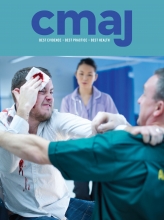We read with interest the article by Sheehan and colleagues1 regarding hip fracture mortality varying by setting. We wondered whether it were possible to determine from their data if time of day of surgery, which is an important risk factor in morbidity and mortality, was a factor.
Wang and colleagues2 showed that the odd ratios (ORs) of mortality for after-hours surgery (compared with those for regular hours) are significantly increased. They report the OR for mortality (when compared with surgery during regular hours) as 1.43 for surgery starting from 15:30–23:29 and as 2.17 when starting from 23:30–07:29.
Academic and large community hospitals are more likely than smaller centres to have daytime orthopedic trauma rooms, emergency operating rooms and available, dedicated surgical personnel. In centres without daytime emergency operating rooms, the general trend is for emergency cases that can wait (such as hip fracture) to do so until after elective procedures are completed and only then to proceed, which results in potential delays in care, and operations occurring at a riskier time.3
Systems like the acute care surgery service4,5 and the dedicated orthopedic trauma room3 have been shown to significantly reduce after-hours emergency surgeries. One system was shown to reduce after-hours surgeries (defined as occurring from 4:30 pm–7:00 am) for femoral neck fractures from 66.7% to 19.3%.6 This alone could decrease mortality for frail, elderly patients.
This raises a potential solution, not considered in the article,1 for smaller centres: the provision of and funding for daytime dedicated emergency operating rooms and the surgical staff to provide service or transfers (to centres with these systems) for patients with hip fractures.
Footnotes
All authors are members of EQuIS, Alberta Children’s Hospital and the University of Calgary, Calgary, Alta.
Competing interests: None declared.











